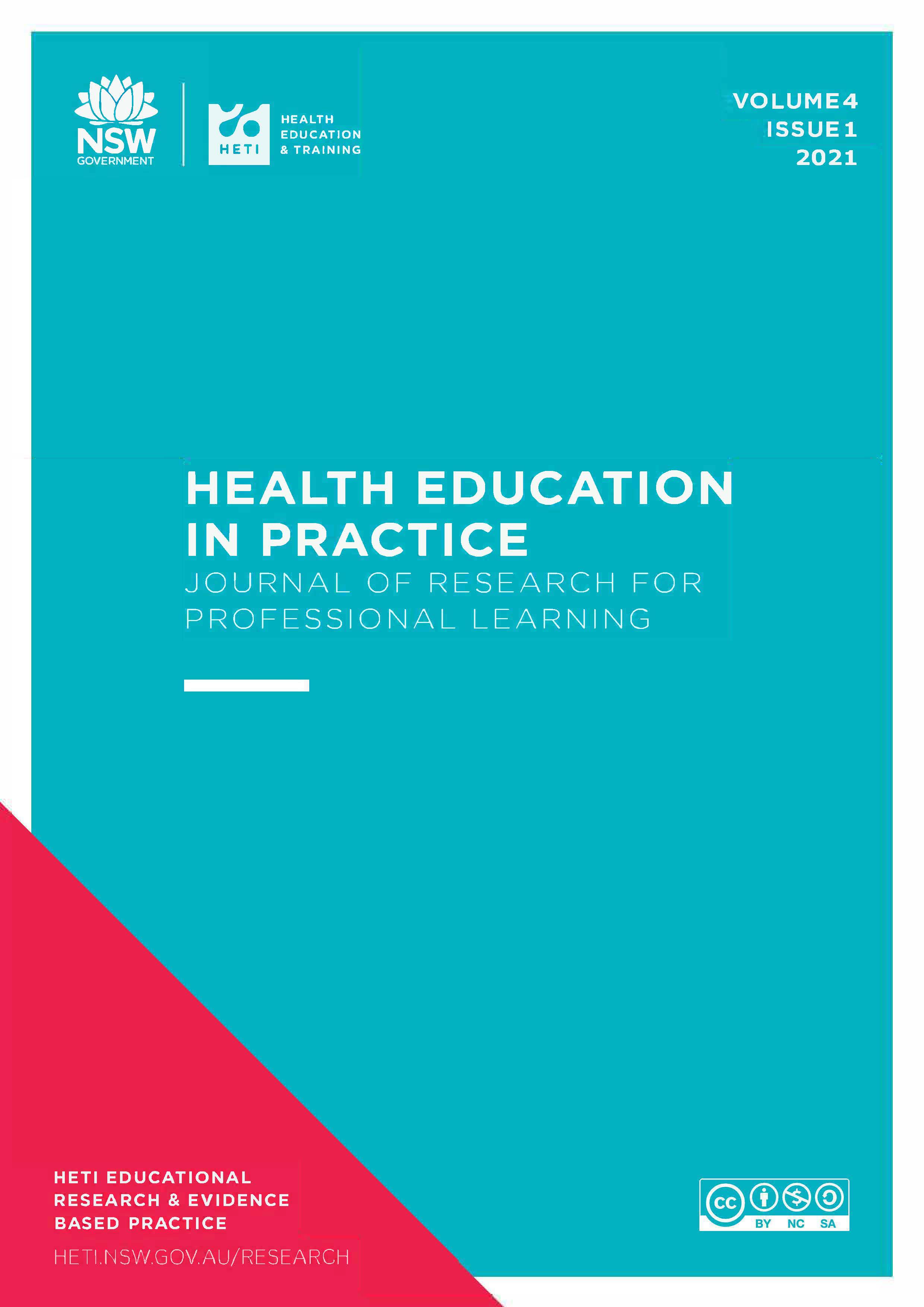Student Perceptions of MASK-EDTM Simulation in Physiotherapy Education: A Mixed Methods Cohort Study
DOI:
https://doi.org/10.33966/hepj.4.1.14854Abstract
Introduction: MASK-EDTM simulation is a novel educational approach in which a clinically experienced educator dons a high-fidelity silicone mask and plays the role of a patient. MASK-EDTM simulation has not yet been evaluated in physiotherapy education. The purpose of this study was to describe physiotherapy students’ perceptions of the value of MASK-EDTM simulation and its effect on perceived preparedness for clinical placements.
Methods: Design: Mixed-methods cohort study, using questionnaires and focus groups over 12 months.
Setting: Entry-level Physiotherapy course at an Australian university.
Participants: Eighty-one physiotherapy students enrolled in their first unit of cardiorespiratory Physiotherapy.
Intervention: MASK-EDTM simulation in five tutorials across two semesters, practising skills including history-taking and secretion clearance techniques.
Main outcome measures: Questionnaires pre- and post clinical placement; thematic analysis of focus group data following clinical placement exposure.
Results: One hundred per cent of students described MASK-EDTM as helpful in developing manual handling skills (mean 3.8/4.0, SD 0.4), establishing rapport and empathy with patients (mean 3.7/4.0, SD 0.5), and communicating with an older patient (mean 3.4/4.0, SD 0.6). Following exposure to clinical placement, students perceived MASK-EDTM as slightly less helpful in enhancing readiness for clinical placement (MD –0.20 out of 5, 95% CI –0.54 to –0.04) compared with before clinical exposure. However, they still considered MASK-EDTM somewhat helpful (mean 3.2/4.0). Three themes were identified: the safety of the learning environment with MASK-EDTM, the importance of communication in MASK-EDTM simulation and the performative aspects of MASK-EDTM simulation. All three themes were underpinned by the importance of authenticity in learning and practice.
Conclusions: Physiotherapy students perceive MASK-EDTM simulation as valuable in enhancing learning relating to clinical practice, particularly prior to clinical placement.
Downloads
References
Barsuk, JH, McGaghie, WC, Cohen, ER, O’Leary, KJ & Wayne, DB 2009, ‘Simulation-based mastery learning reduces complications during central venous catheter insertion in a medical intensive care unit’, Crit Care Med, vol. 37, no. 10, pp. 2697–2701.
Braun, V & Clarke, V 2008, ‘Using thematic analysis in psychology’, Qualitative Research in Psychology, vol. 3, no. 2, pp. 77–101.
Cooper, S & Endacott, R 2007, ‘Generic qualitative research: a design for qualitative research in emergency care?’, Emergency Medicine Journal, vol. 24, no. 12, pp. 816–819.
Creswell, J 2009, ‘Editorial: mapping the field of mixed methods research’, Journal of Mixed Methods Research, vol. 3, pp. 95–108.
Doran, B & Setchell, K 2018, ‘Performative acts of physiotherapy’, Manipulating practices. A critical physiotherapy reader, Capellen Damm Akademisk, Oslo, Norway.
Fraser, K, Peets, A, Walker, I, Tworek, J, Paget, M, Wright, B & McLaughlin, K 2009, ‘The effect of simulator training on clinical skills acquisition, retention and transfer’, Med Educ, vol. 43, no. 8, pp. 784–789.
Jeffries, PR 2005, ‘A framework for designing, implementing, and evaluating simulations used as teaching strategies in nursing’, Nurs Educ Perspect, vol. 26, no. 2, pp. 96–103.
Kable, AK, Arthur, C, Levett-Jones, T & Reid-Searl, K 2013, ‘Student evaluation of simulation in undergraduate nursing programs in Australia using quality indicators’, Nurs Health Sci, vol. 15, no. 2, pp. 235–243.
Knowles, M 1984, The adult learner: a neglected species, Gulf Publishing, Houston, TX.
McAllister, M, Levett-Jones, T, Downer, T, Harrison, P, Harvey, T, Reid-Searl, K, Lynch, K, Arthur, C, Layh, J & Calleja, P 2013 ‘Snapshots of simulation: creative strategies used by Australian educators to enhance simulation learning experiences for nursing students’, Nurse Educ Pract, vol. 13, no. 6, pp. 567–572.
McAllister, M, Searl, KR & Davis, S 2013, ‘Who is that masked educator? Deconstructing the teaching and learning processes of an innovative humanistic simulation technique’, Nurse Educ Today, vol. 33, no. 12, pp. 1453–1458.
Reid-Searl, K, Eaton, A, Vieth, L & Happell, B 2011, ‘The educator inside the patient: “students” insights into the use of high fidelity silicone patient simulation’, J Clin Nurs, vol. 20, no. 19–20, pp. 2752–2760.
Reid-Searl, K, Happell, B, Vieth, L & Eaton, A 2012, ‘High fidelity patient silicone simulation: a qualitative evaluation of nursing “students” experiences’, Collegian, vol. 19, no. 2, pp. 77–83.
Sturm, LP, Windsor, JA, Cosman, PH, Cregan, P, Hewett, PJ & Maddern, GJ 2008 ‘A systematic review of skills transfer after surgical simulation training’, Ann Surg, vol. 248, no. 2, pp. 166–179.
Vygotsky LS 1978, Mind in society, Harvard University Press, Harvard.

